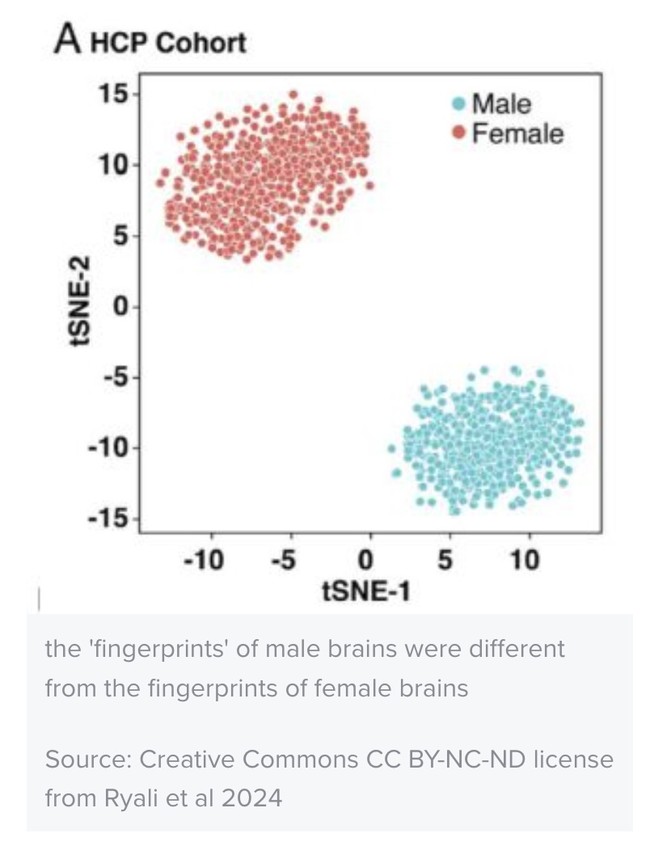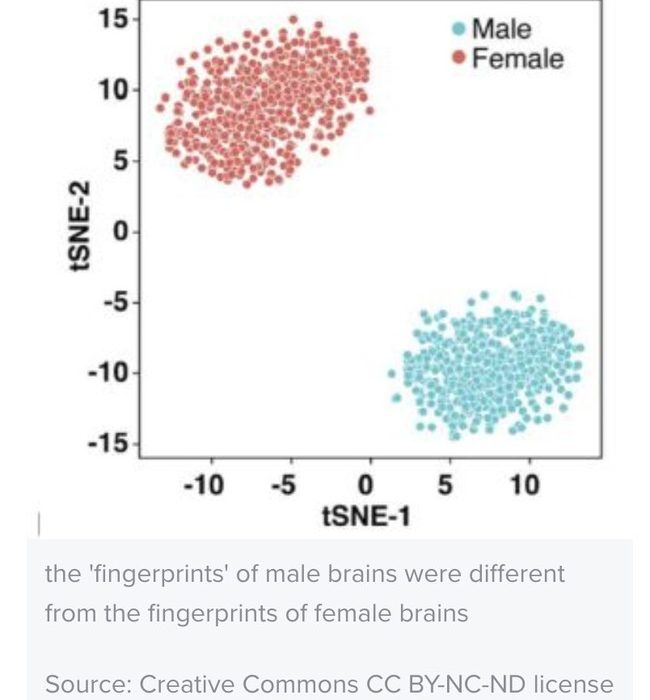
The findings from a Stanford study on the similarities and differences between male and female brains are surprising but not shocking.
Our day-to-day experiences lead most of us to intuitively understand that men and women think very differently, and to suspect that at least some of this difference is caused by biological differences and not the result of social constructs, but it turns out that the differences are much more profound than most of us assume.
Advertisement
We’ve always known that male and female brains differ from each other. But now, a new tool is showing just how extensive those differences may be. Is one actually “better” than the other? https://t.co/oFyQIc5bZj
— Psychology Today (@PsychToday) June 25, 2024
Of course, without external data to verify our intuitions, it would be impossible to know for certain. Men and women can’t switch their biology, whatever the alphabet people say, and most noninvasive research has a difficult time distinguishing between socially constructed differences and biologically-based ones.
So Stanford scientists used a different approach and discovered that the differences are both fundamental and large. Large enough for Psychology Today to characterize them as “astonishing.”
researchers at Stanford recently used artificial-intelligence methods to examine brain activity in roughly 1,500 young adults 20 to 35 years of age. Neuroscientists have known for many years that every human brain is characterized by a “fingerprint” of brain activity at rest, unique to that individual. The Stanford neuroscientists used big-data artificial intelligence techniques to determine the fingerprint of every one of those 1,500 young adults and then compared females with males. Did females differ from males? Was there overlap? The results were astonishing.
As you can see, there wasn’t a continuum: the female fingerprints of brain activity were quite different from the male fingerprints of resting brain activity, with no overlap. These findings strongly suggest that what’s going on in a woman’s brain at rest is significantly different from what’s going on in a man’s brain at rest.
Just as remarkably, the Stanford team mapped fMRI patterns of connectivity onto cognitive functions such as intelligence. They found particular patterns of connectivity within male brains that accurately predicted cognitive functions such as intelligence. However, that male model had no predictive power for cognitive functions in women.
Conversely, they found particular patterns of connectivity within female brains that accurately predicted cognitive functions such as intelligence among women. However, that female model had no predictive power for cognitive functions in men.
These findings strongly suggest that the determinants of cognitive functions in male brains are profoundly different from the determinants of cognitive functions in female brains.
Advertisement
The specifics matter less than the dichotomy. Male thinking patterns and female thinking patterns cluster together without overlap between the groups. There is no continuum as has long been thought; the clusters are distinct.
I have to admit that I was really surprised by these results. I have been writing about these topics for more than 20 years. In the first edition of my book Why Gender Matters, published by Doubleday in 2005, I devoted a chapter to kids who are psychologically “gender-atypical.” I suggested that these kids are somewhere in between male and female. But the Stanford study provides little support for that claim. I am hopeful that the researchers will do follow-up studies specifically looking at individuals who are gender-nonconforming, gender-atypical, and who have gender dysphoria, to see whether and how those characteristics influence these findings.
The researchers are well aware of the implications of their findings. They know all about the previous studies suggesting small effect sizes, lots of overlap, and a continuum of male/female differences. They conclude that the failure of previous work to demonstrate these huge effects is due to the “weaker algorithms” employed in earlier research. They conclude: “Our results provide the most compelling and generalizable evidence to date, refuting this continuum hypothesis and firmly demonstrating sex differences in the functional organization of the human brain.”
There has been very little coverage of this report in the mainstream media. You will find no mention of this study in The New York Times, the Wall Street Journal, or National Public Radio. I suspect that’s because most mainstream media are cautious of anything having to do with brain-based differences between women and men. Many of us are understandably wary that any claim of difference will lead to claims regarding ability.
Advertisement
That last concern is obviously reasonable, as people with preconceived notions will seize on evidence that confirms their biases to make conclusions that are not supported by the evidence.
Men and women are different, with different ways of thinking and different skills. We see different kinds of patterns. We have all seen this in our day-to-day lives, although there is lots of room for science to tease out the specifics.
However, assessing one type of brain as superior to the other fundamentally misunderstands the reasons why our brains have developed differently: human beings have evolved over millennia to survive optimally in male/female bonding pairs. The continuation of the human race depends on that fundamental fact, and examining one sex in isolation is absurd.
It may be true–appears to be true, in fact–that men are better at some things and women at others, neither skill set is complete without the other. Men may be biologically determined to be better warriors and engineers, while women may be better at organization and conflict resolution, but all these skills are necessary to make a fully functioning society.
Most importantly, in my view, women’s skills are the key to civilizational progress. In societies where women are treated as chattel, there seems to be a civilizational limit beyond which progress stops or even recedes. Think of the Taliban or Iran. Conversely, the dramatic progress in Western Civilization over the past 300 years or so has corresponded with a dramatic increase in the status of women.
Advertisement
Is this correlation spurious? I don’t think so.
In any case, slowing the progress of science out of fear that people will take the results and apply them in a morally dubious way is a mistake. Facts are facts, and knowing more is functionally better.



